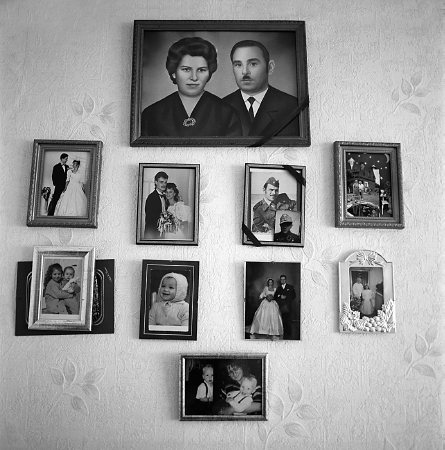Arranging Your Points
Arranging Your Points
Page 262
Think for a moment of a family photo album. If you were to put one together that covered your entire life, how would you arrange it?
Think for a moment of a family photo album. If you were to put one together that covered your entire life, how would you arrange it? You could work chronologically, simply placing the photos in the order in which they were taken. You might expand on that chronological approach by trying to arrange the photos in a way that tells the story of your family. Alternatively, you might arrange it by topic, with separate sections for certain types of events or individual family members.
You have similar options when preparing a speech. During the process of sorting out your main points and subpoints, you may have taken the initial step of arranging your ideas in some sequence. Here are some common arrangements, or patterns, to consider.
Chronological Pattern. Often it makes sense to organize your points according to time: what happened first, second, and so on. A chronological pattern presents the main points of a message forward (or backward) in a systematic, time-related fashion. A chronological organization can be especially useful when analyzing a step-by-step process, such as a presentation on how to use a new computer program.

Topical Pattern. Also known as a categorical pattern, the topical pattern is based on organization into categories, such as persons, places, things, or processes. Thus you might use it to describe the various departments in an organization, the characteristics of a successful employment interview, or the reasons for giving a charitable contribution to a specific organization.
One key concern when selecting this approach is the sequencing of topics—which topic to offer first, second, and so on. Depending on the circumstances, the best approach is often ascending or descending order—that is, according to the relative importance, familiarity, or complexity of the topics. The primacy-recency effect can also offer some guidance in that it notes that audiences are most likely to remember points you raise at the very beginning or very end of a message, indicating that you might place your strongest point first or last so that your audience members keep it in mind long after you end your presentation.
Spatial Pattern. The geographical or spatial pattern arranges main points in terms of their physical proximity or position in relation to each other (north to south, east to west, bottom to top, left to right, outside to inside, and so on). As an organizational pattern, it is most useful when describing objects, places, or scenes in terms of their component parts.
Problem-Solution Pattern. If you’re trying to call an audience to action to address a particular problem, the problem-solution pattern of organization can be especially effective. This pattern involves dramatizing an obstacle and then narrowing alternative remedies down to the one that you recommend. The message is organized to focus on three key points:
- There is a problem that requires a change in attitude, belief, or behavior.
- A number of possible solutions might solve this problem.
- Your solution is the one that will provide the most effective and efficient remedy.
Topics that lend themselves to this pattern include business, social, economic, and political problems for which you can propose a workable solution.
Cause-Effect Pattern. With the cause-effect pattern, you attempt to organize the message around cause-to-effect or effect-to-cause relationships. That is, you might move from a discussion of the origins or causes of a phenomenon (for example, rising fuel costs) to the eventual results or effects (increases in the cost of airplane tickets). You can also work in reverse, starting with a description of present conditions and then examining apparent or possible causes. The choice of strategy is often based on which element—cause or effect—is more familiar to the intended audience: if you’re talking about fuel prices, for example, it might be best to start with the cost of gasoline—a very familiar expense—and work backward from there. The cause-effect pattern of organization is especially useful when your purpose is to get your audience to agree with or understand your point, rather than to call people to action.
Culture and You
When you try to explain or present information to others in your life—friends, family, classmates, coworkers—do you find that you tend to use a particular pattern to arrange your points? Do you find that other people in your various co-cultures favor particular strategies?
Narrative Pattern. Speakers often tie their points together in a way that presents a vivid story, complete with characters, settings, plot, and imagery. This is called a narrative pattern. However, most speeches built largely on a story (or a series of stories) are likely to incorporate elements of other organizational arrangements. For example, you might present a story in a cause-effect design, in which you first reveal why something happened (such as a small aircraft crash) and then describe the events that led up to the accident (the causes).
Motivated Sequence Pattern. The motivated sequence pattern, created more than seventy years ago by the noted public speaking scholar Alan Monroe, is a five-step plan for organizing a speech, which can be useful in a variety of contexts. Based on the psychological elements of advertising, the motivated sequence pattern includes five phases, which may be modified to suit the desired outcome of your speech: Attention, Need, Satisfaction, Visualization, and Action. Monroe argued that these five steps motivate listeners; presentations that lend themselves to the motivated sequence include persuasive presentations, inspirational speeches, graduation addresses, and motivational talks. (For a more detailed discussion and examples of Monroe’s Motivated Sequence, see pp. 350–351 in chapter 15.)